Mexico City’s Day of the Dead celebration is a dazzling fusion of remembrance, cultural pride, and vibrant festivity, creating one of the most breathtaking sights during this time is the lighting of the Zócalo. As the heart of Mexico City, the Zócalo transforms into a glowing altar to the departed, adorned with a giant ofrenda that brings both locals and travelers together to honor loved ones in a way that’s both visually stunning and deeply meaningful.
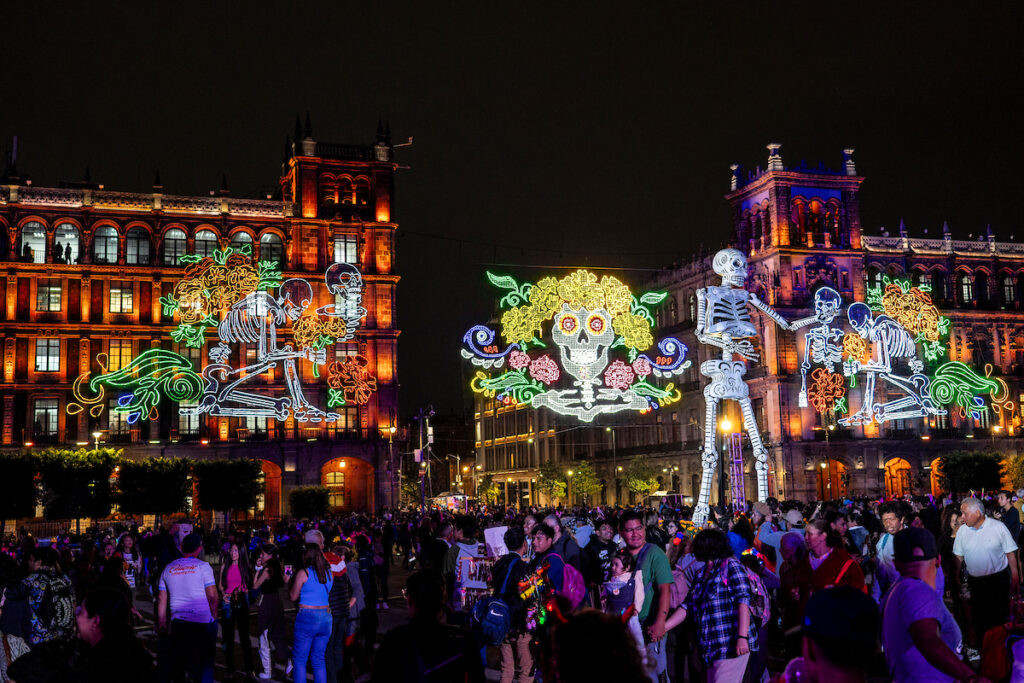
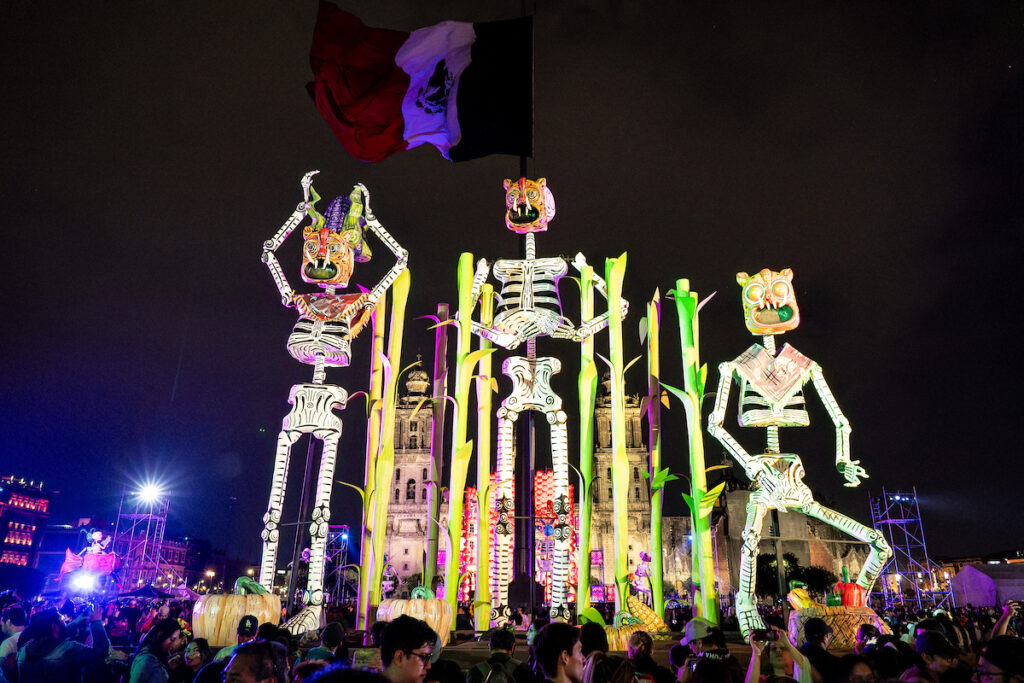
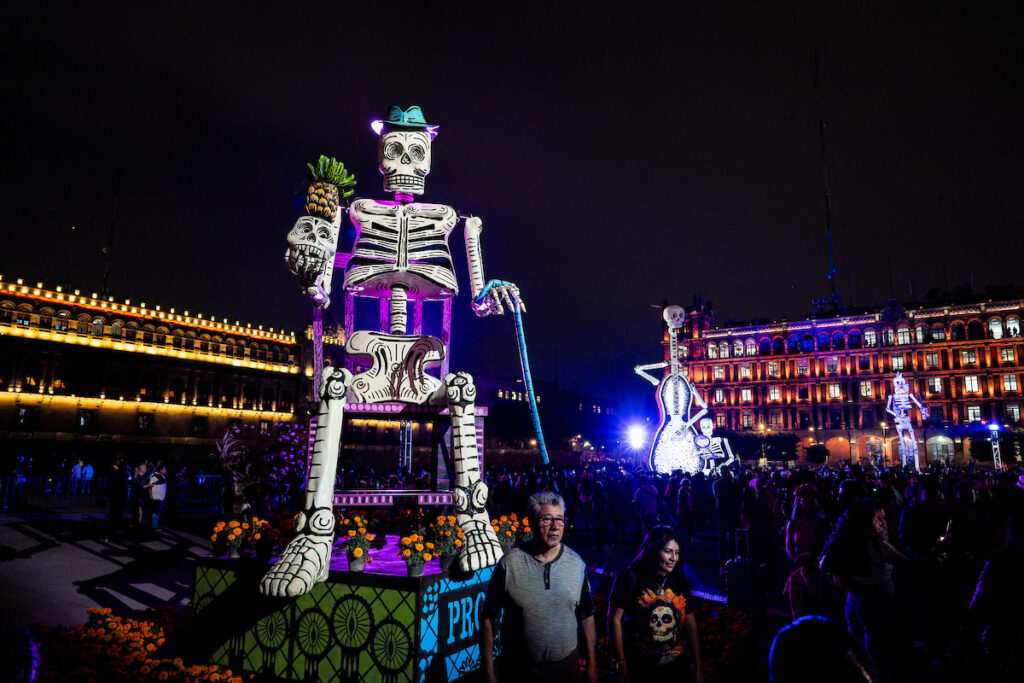
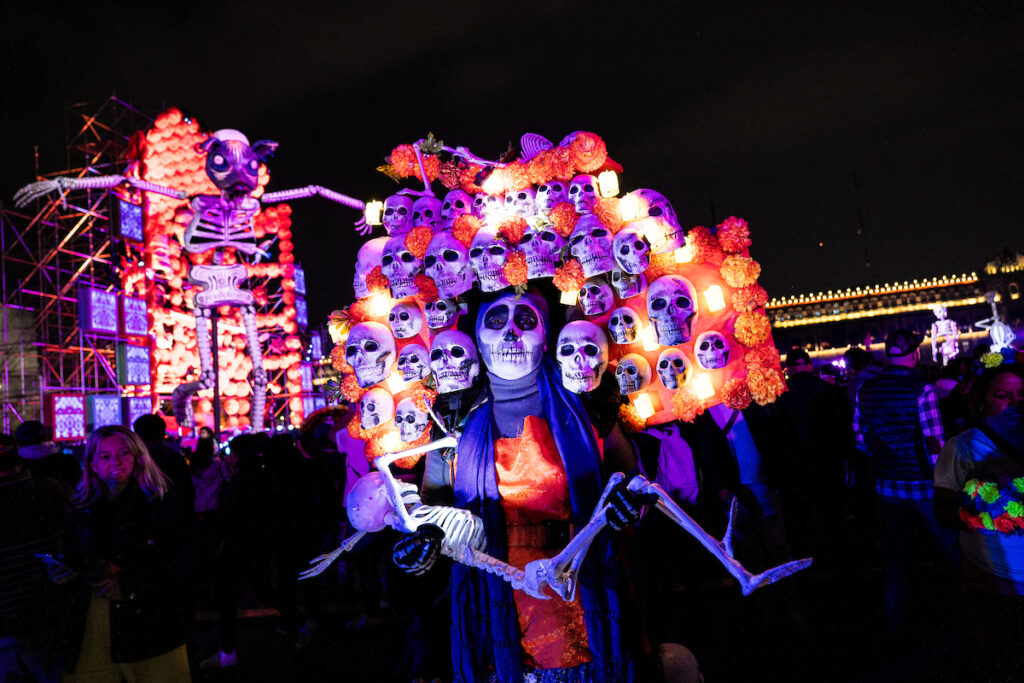
The Magic of the Giant Ofrenda
At the center of the Zócalo stands the giant ofrenda, a carefully crafted and awe-inspiring altar designed to welcome the spirits of the dead. Each year, the design of the ofrenda evolves, incorporating elements that pay tribute to different aspects of Mexican heritage. This isn’t just any ofrenda; it’s a massive work of art, covered in flowers, candles, photos, and symbolic objects that honor those who have passed. The altar is surrounded by smaller, individual offerings and arrangements, making the square a layered tapestry of life, memory, and color.
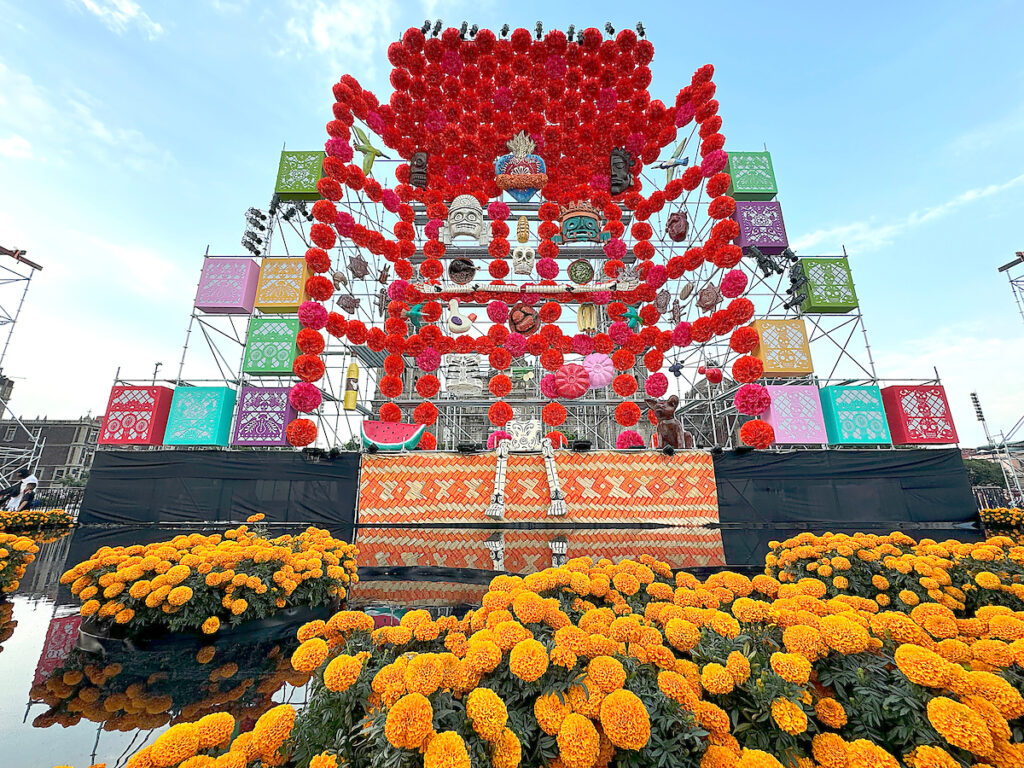
The marigold, known as cempasúchil, plays a starring role in these displays. Their bright orange petals, believed to guide spirits back to the world of the living, form pathways through the square, drawing visitors toward the altar. Candles arranged in intricate designs add to the beauty, illuminating the Zócalo with a warm, inviting glow that seems to reach out to the night sky.
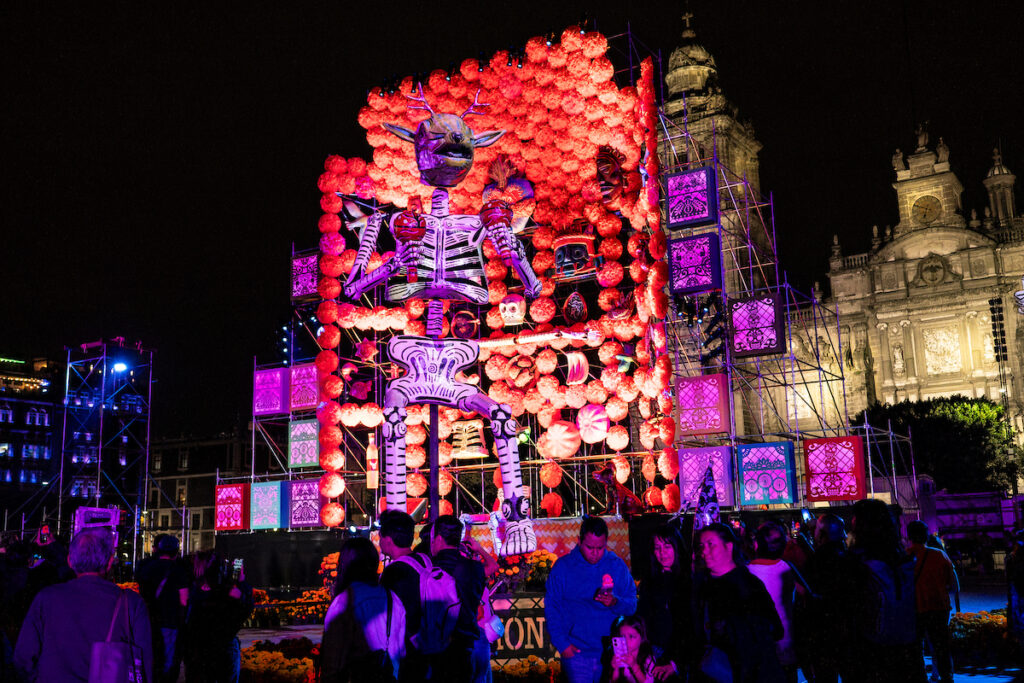
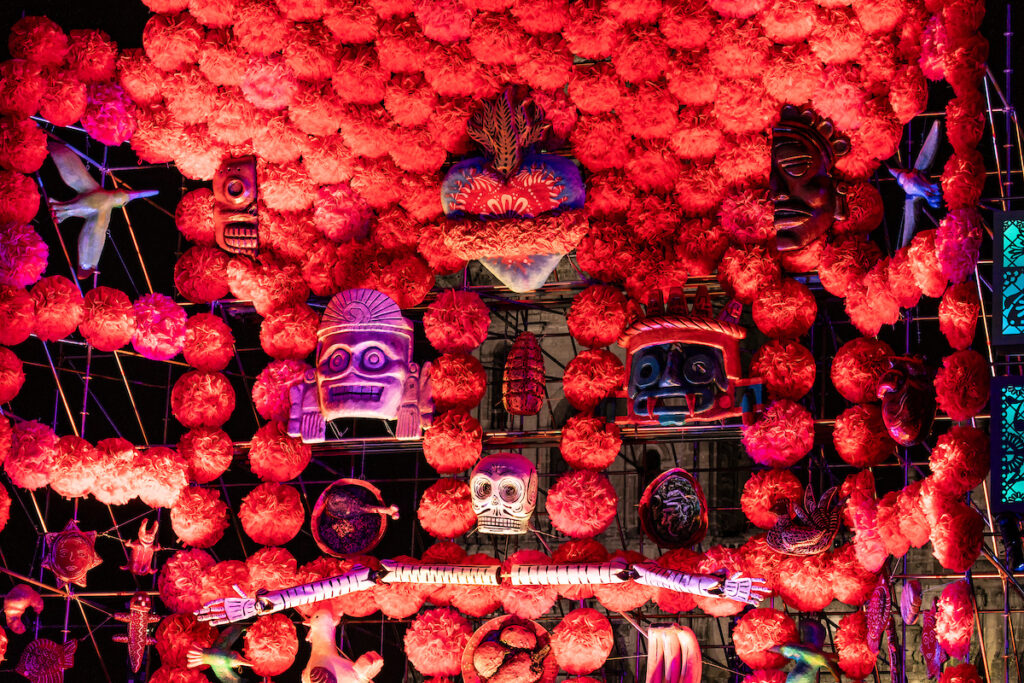
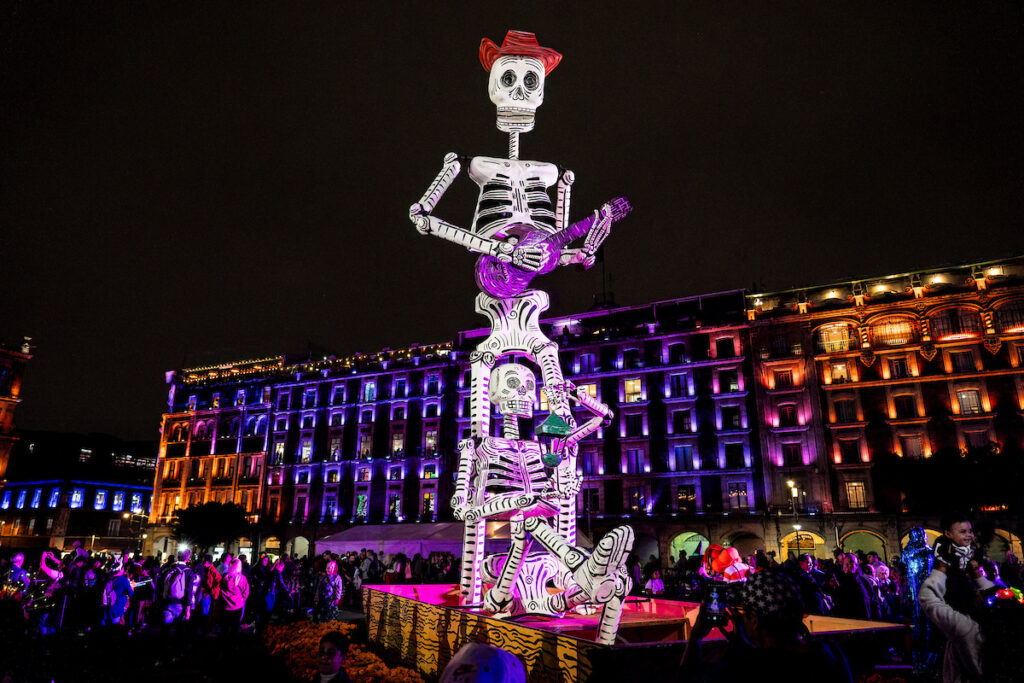
A City Bathed in Light
On October 31st, as night falls, thousands gather in the square around 7 p.m., surrounded by illuminated skeleton figures, towering sugar skulls, and arches of light. The atmosphere brings a mix of quiet reverence and joy, offering a chance to feel close to departed loved ones. The lights and decorations create a surreal ambiance, transforming the square into a sacred space, where the veil between worlds feels thinner and the presence of those who have passed is tangible.
Mariachi bands and folk musicians perform, filling the square with soulful music that enhances the spiritual experience. For many, it’s a moving reminder of how Mexico embraces death as an integral part of life.
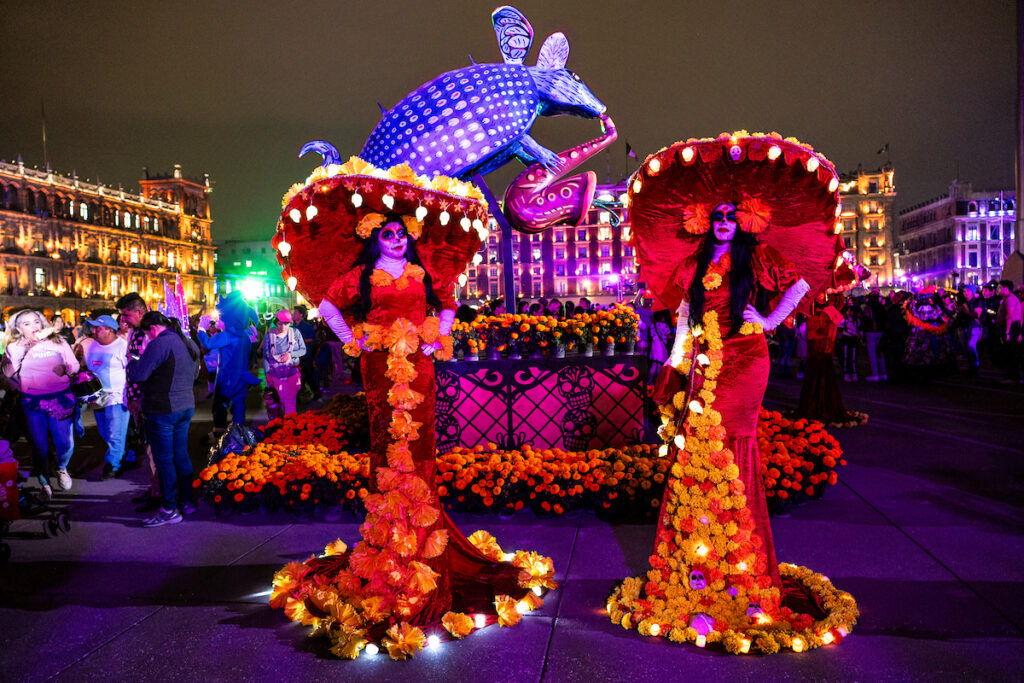
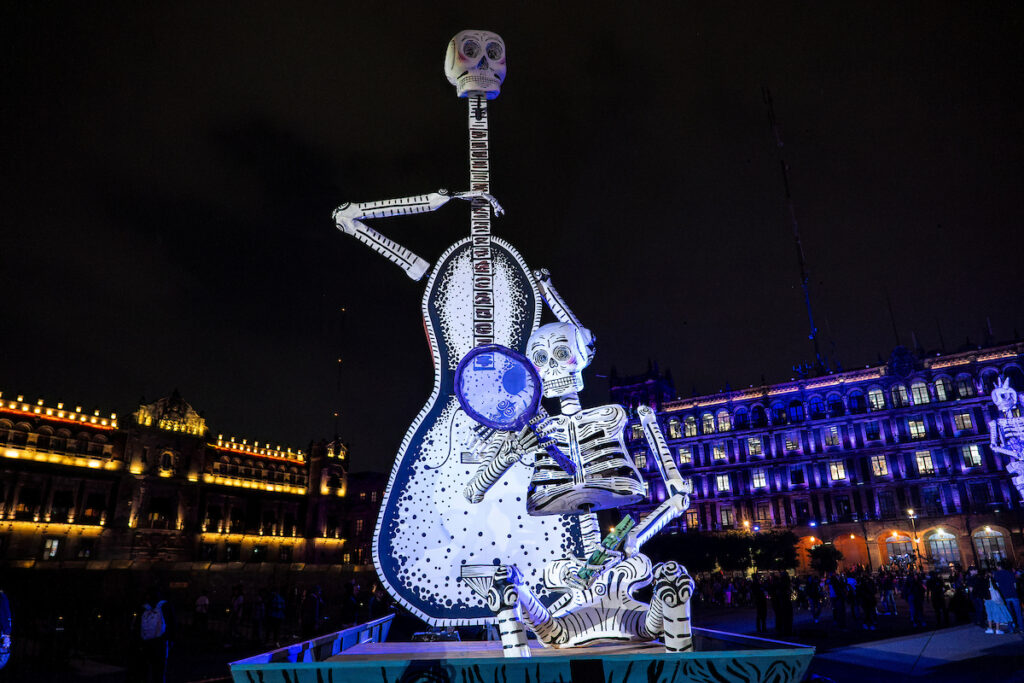
A Celebration of Community and Culture
Beyond the grand altar, local artists and volunteers contribute to the festivities with smaller altars, face-painting booths, and stands selling traditional foods like tamales, pan de muerto, and hot chocolate. It is an event for the whole family with street vendors selling light up toys and performers lined up to take photos with everyone in attendance.
Families and friends wander the square, sharing stories, leaving offerings, and enjoying the warmth of community as they celebrate the lives of their loved ones. The lighting of the Zócalo isn’t just a visual spectacle; it’s a cultural gathering that embodies the unity and spirit of Mexico.
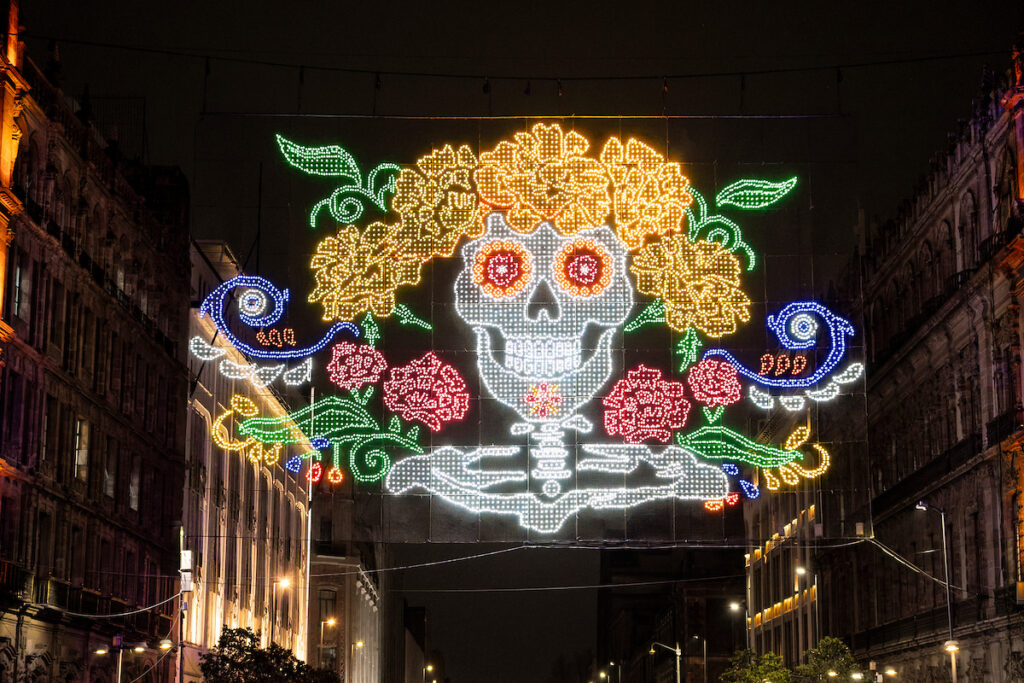
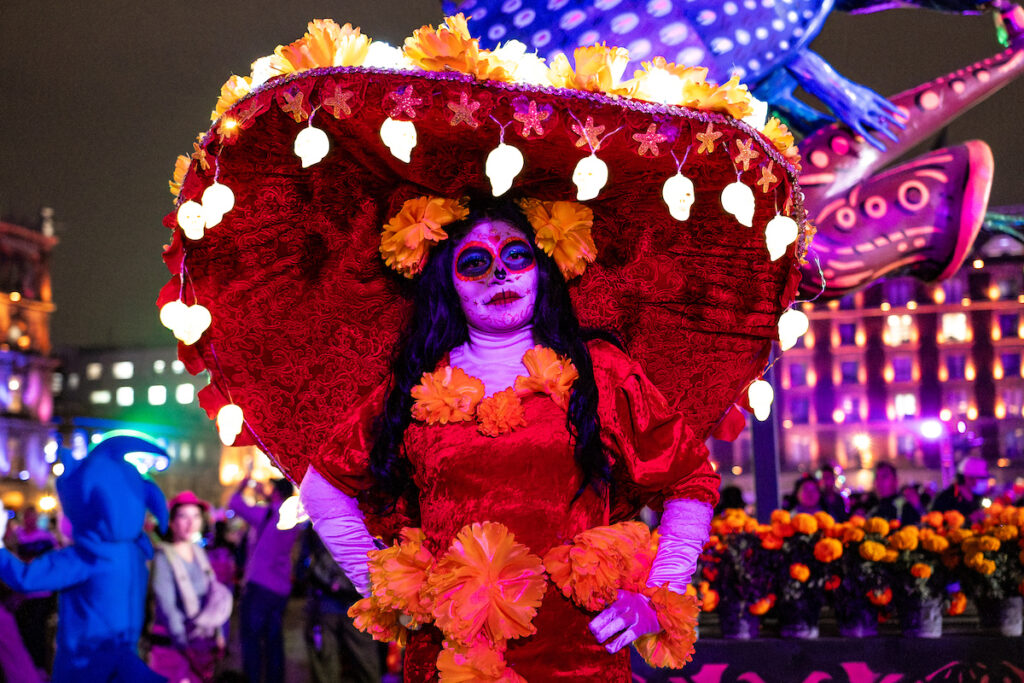

Why You Shouldn’t Miss It
For anyone visiting Mexico City during Día de Los Muertos, witnessing the lighting of the Zócalo and the giant ofrenda is unforgettable. It’s an invitation into one of Mexico’s most cherished traditions, offering an up-close look at how a culture can embrace death as a beautiful part of life’s journey. Watching the glow of the candles and the colorful blooms of marigolds, you can feel the respect, joy, and love that the people of Mexico bring to this celebration every year.
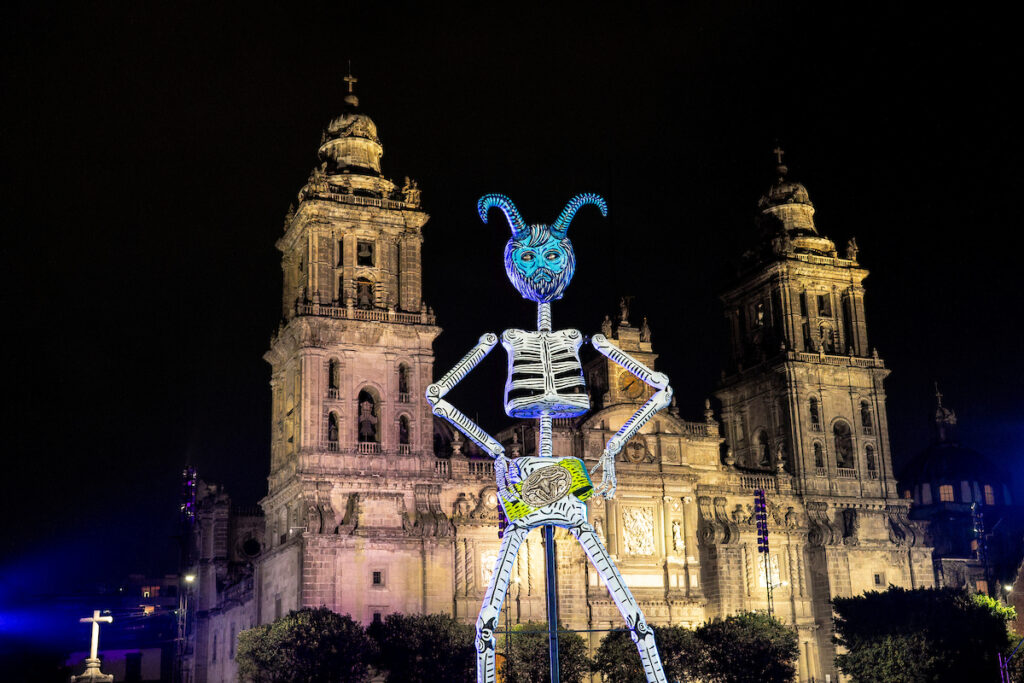
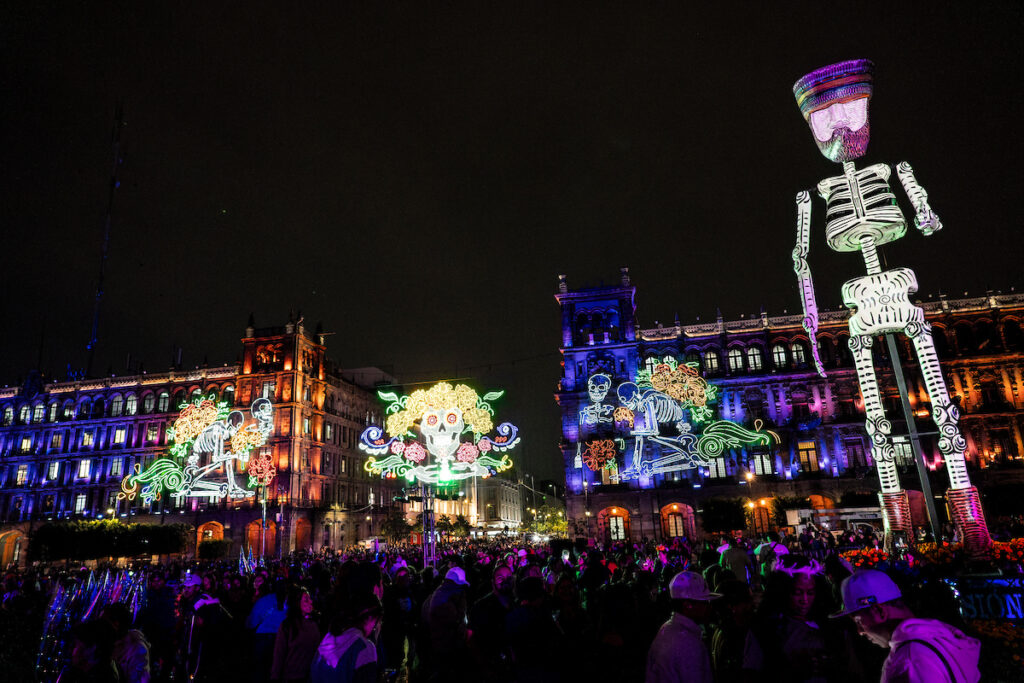
The atmosphere blends quiet reverence with joyful celebration. This creates a heartfelt opportunity to feel close to loved ones who have passed. As the night unfolds, this unique combination of solemnity and joy fosters a deeply moving experience for all who gather.

